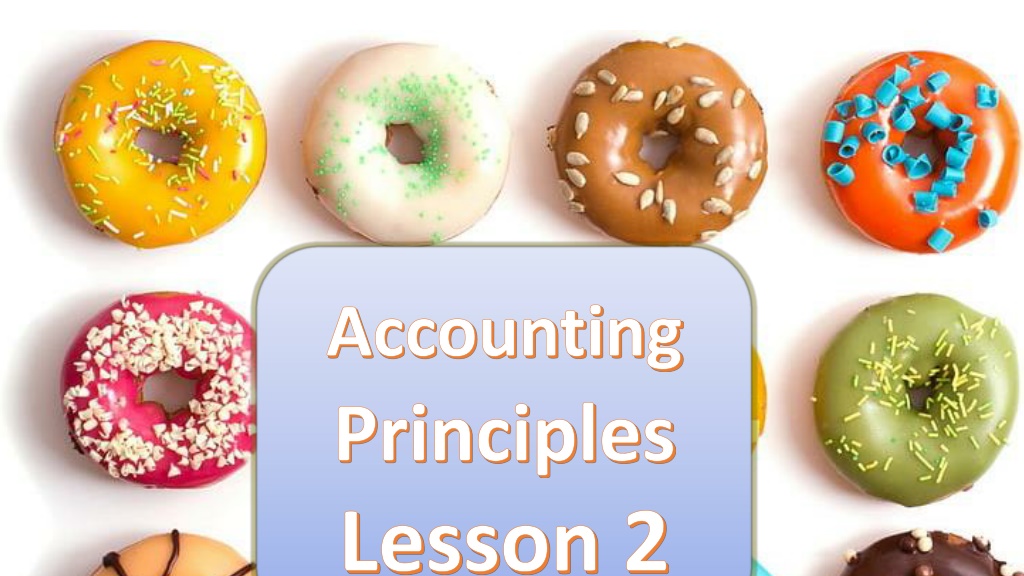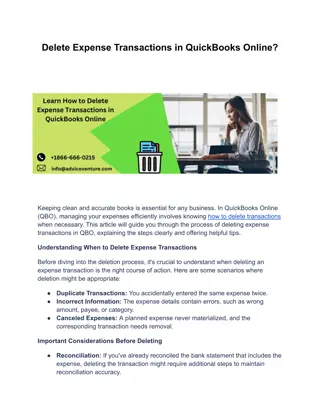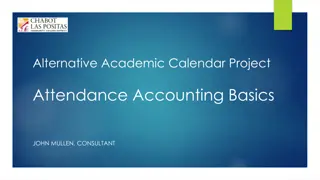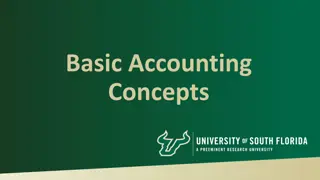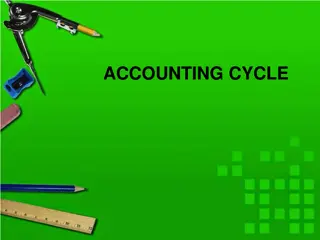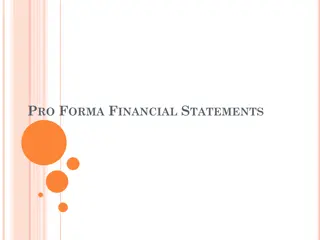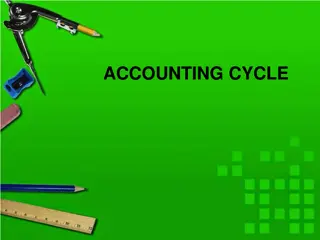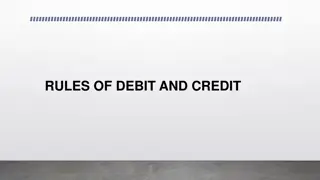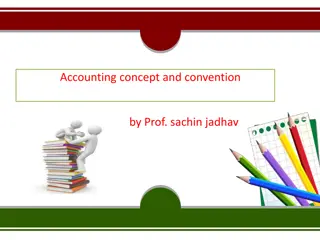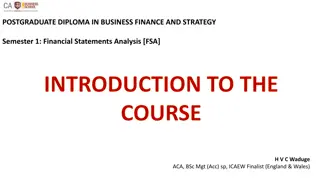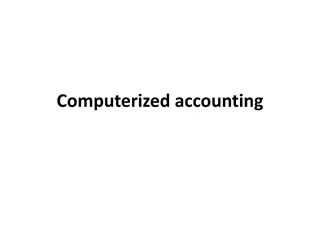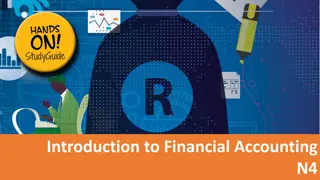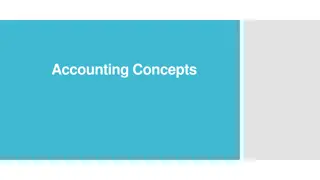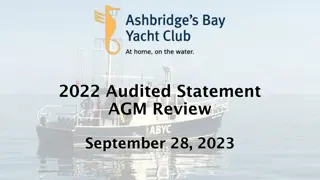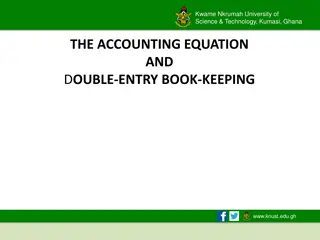Understanding Accounting Principles Lesson 2: Transactions and Financial Statements
Delve into the world of accounting as we explore transactions, double-entry bookkeeping, and the impact on financial statements. Learn how assets, liabilities, and equity interact through examples like Nathans Donut School's initial investments, equipment purchases, and cash earnings. Follow the journey of a new business navigating its way through financial transactions and understand the essential concepts of accounting principles.
Uploaded on Oct 09, 2024 | 0 Views
Download Presentation

Please find below an Image/Link to download the presentation.
The content on the website is provided AS IS for your information and personal use only. It may not be sold, licensed, or shared on other websites without obtaining consent from the author. Download presentation by click this link. If you encounter any issues during the download, it is possible that the publisher has removed the file from their server.
E N D
Presentation Transcript
Accounting Principles Lesson 2 1
Sample QuickBooks Online Test Drive open without signing in. If necessary, open incognito qbo.intuit.com/redir/testdrive 6
Nathaniel invests $35,000 to open Nathans Donut School . Assets = Liabilities + Equity $35,000 $0 $35,000 cash increased owner s $ increased TIP! When a transaction takes place, the concept of double-entry bookkeeping dictates that at least two accounts must be impacted. 7
Nathans Donut School pays $20,000 for baking equipment. Assets = Liabilities + Owner s Equity 20,000- baking equipment -20,000- checking $0 = $0 + $0 10
Nathans Donut School pays $20,000 for baking equipment. Assets = Liabilities + Owner s Equity 20,000- baking equipment Increase -20,000- checking decrease $0 = $0 + $0 11
The company purchases $500 of supplies and $1,000 of furniture on account Assets = Liabilities + Owner s Equity 12
The company purchases $500 of supplies and $1,000 of furniture on account Assets = Liabilities + Owner s Equity +$500 supplies $1,5000 A/P $0 +$1000 furniture 13
Nathans Donut School opens for business, and on its first day earns $850. As of now, the company only accepts cash payments. Assets = Liabilities + Owner s Equity 14
Nathans Donut School opens for business, and on its first day earns $850. As of now, the company only accepts cash payments. Assets = Liabilities + Owner s Equity 15
Assets Liabilities Owner s Equity Cash Accounts Payable Sales Revenue Using Account Names and Descriptions Accounts Receivable Notes Payable Service Revenue Supplies Salaries Payable Rent Expense Prepaid Insurance Unearned Revenue Utilities Expense Inventory Mortgage Payable Telephone Expense Equipment John Doe, Capital Buildings John Doe, Drawing TIP! Different companies use many different account names. These are the most common. Land 16
Recording Transactions To calculate account balances, combine the impact of every transaction QUIZ By recording transactions, a company can maintain a running balance of the value in each account Which accounts are affected use the chat to answer 1. Nathan invests $35K to open the donut school? Cash = capital 2. Nathan s school pays $20K for baking equipment? (Cash) = Equipment 3. Company purchases $500 of supplies and $1K of furniture on account? Supplies , Furniture = AP $1500 4. Nathan s school opens for business, and on its 1st day earns $850 cash? Cash = Revenue 5. The company pays off the $1500 that was owed from the purchases of supplies and furniture. (Cash) = (AP) 17
True Meaning of Debits and Credits Credits represent the Sources that economic benefit can flow from Debits represent the Destinations that economic benefit can flow to 18
